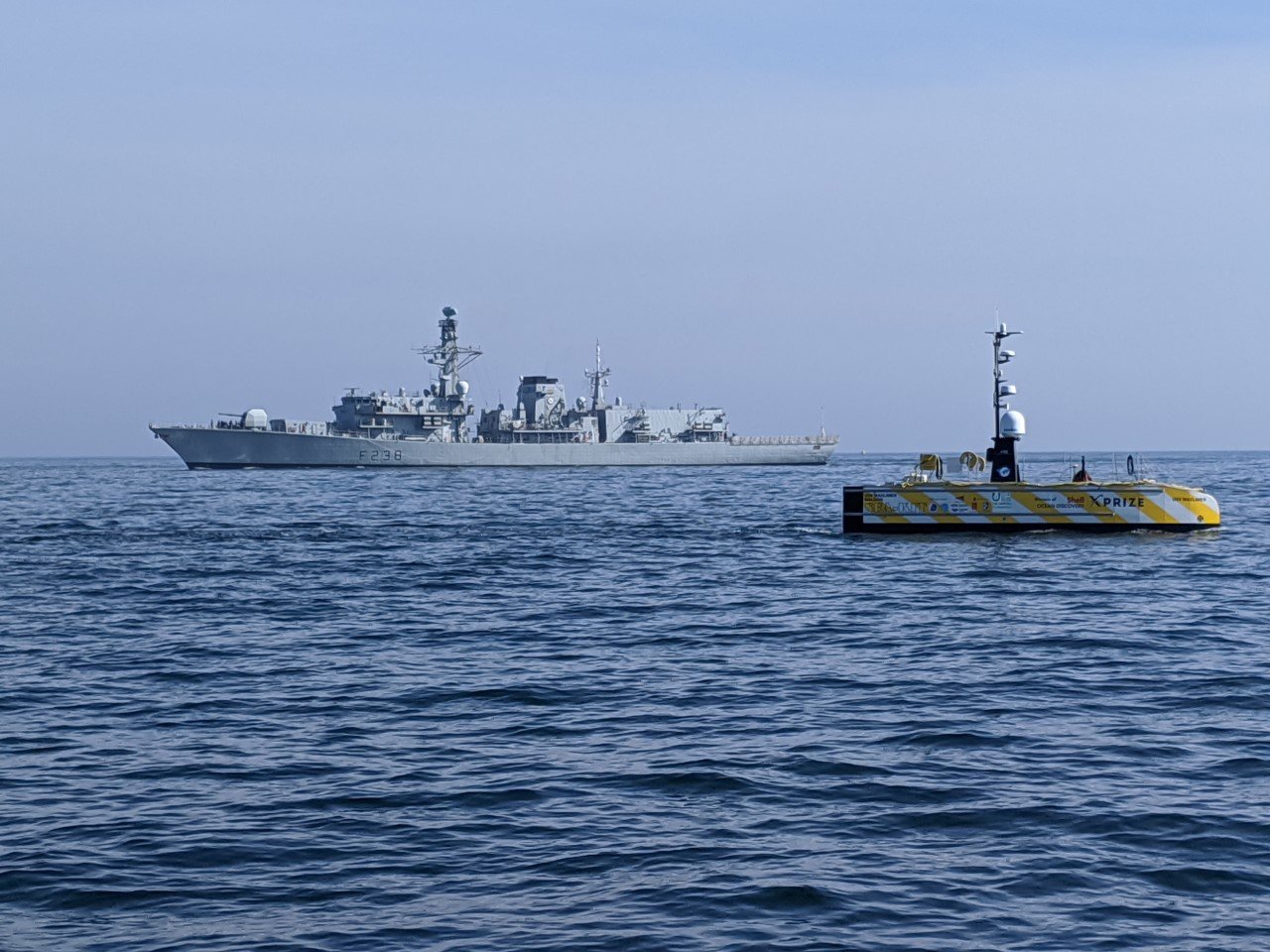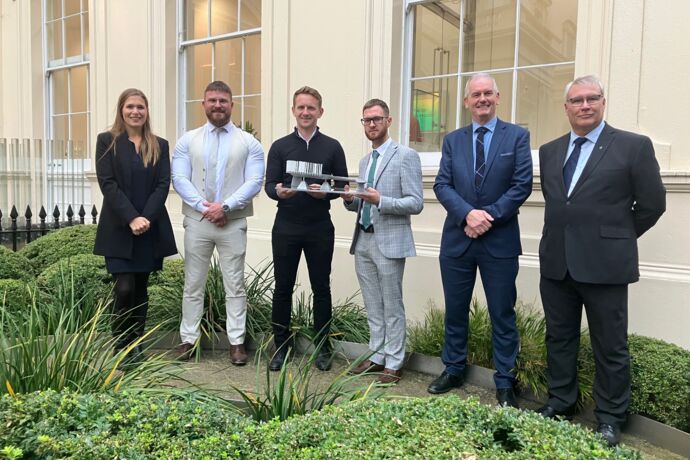Collaboration, partnership and interoperability in subsea defence
The theme at the heart of many major naval defence events this year is integration and collaboration. Simon Partridge, Chief Strategy Officer at Sonardyne Group, discusses the opportunities for naval industry collaboration, ways to ensure parit y with businesses and the key to making faster technological advances in subsea defence.
y with businesses and the key to making faster technological advances in subsea defence.
The recognition that collaboration can accelerate the navy’s future technologies for subsea protection has never been greater. Naval organisations are wired to defend, protecting their valuable IP and development strategies, yet from a technological perspective, on which the most sophisticated methods of defence depend, many advances are made through collaboration, partnership and interoperability.
The attention of allied navies is turning increasingly to the underwater domain, fuelling demand for ever-increasing numbers of autonomous systems with complex capabilities. This means that we need to turn technology innovation into tangible solutions that deliver autonomous capability. As a result, collaboration between navies, vendors, consultancies, academia and government will be required to move from brief to product testing and delivery to make great things happen in subsea defence solutions.
Partnership types
Marine technology organisations are at different points on the spectrum when it comes to partnership cultures and their willingness to work with other organisations. Some naval subsea organisations have a very active partnership programme, such as the UK Ministry of Defence’s naval design partnership division, which partners with industry-leading technology companies to collaborate and innovate. Their joint government/industry premises provide a collaborative environment for naval design.
Industry vendors typically recognise the need to work with and through partners to sell their products and navies need to also be open and inclusive, using the strengths of each organisation. For instance, one vendor may excel at producing optical and sonar components but isn’t an expert at putting holes in submarines or integrating signals into sonar systems. By forging strong, strategic partnerships, we will make the fastest progress to stay ahead of any future naval threats.
Primes’ autonomy systems role
Primes developing the autonomous naval systems on which acoustic and optical detection and identification software is fitted have a direct line into the navies and are often the first port of call for technological development. Possibly incongruously so, since although the platforms need to operate at the highest standard, it is the onboard technology they don’t manufacture that is so vital to the application.
Effective technology partners are brought in to collaborate with vehicle manufacturers to make it easier to install and integrate onto the vehicles. This high-quality integrated capability comprises acoustic positioning, communications, imaging, and navigation, all built into a seamless package.
Autonomous systems primes being open and inclusive on the brief allowing their sub-technology partners to directly liaise with the navies make it much easier for the vehicle companies themselves to best deliver to the RFP in question.
However, while long-standing naval tech partnerships are highly prized, emerging talent and solutions should also be. Size should not matter in subsea technology companies as much as the breadth of knowledge and capability; the SMEs in the industry are moving in with niche technologies and fast manufacturing capabilities gained from commercial experience to shake up the prime’s big-player-incumbent model. How can this be done?
Understanding the brief
It can be quite challenging to gain a good understanding of the navy’s requirements from a performance and technology perspective, which can lead to the technology delivered missing the mark. For example, you can have great robotic technology in an underwater uncrewed underwater vehicle (UUV), and advanced laser technology, but if it doesn’t operationally fit the specific naval task or application, it’s not fit for purpose.
We brief responses that require 30 people to operate one vehicle when the navy required to have one person controlling 30 UUVs. Making assumptions about what the navy is looking for is pointless. The only way to partner with the navy is to be involved in early discussions, to go onboard vessels, understand what the missions involve for their assets, and appreciate the scale of the project.
There is no doubt that simulation and analyses add value when considering a response to a naval brief, but sometimes too much time upfront can be taken up by this. For example, where there is existing off-the-shelf technology that can be lightly modified and trialled live in water to demonstrate its applicability to naval requirements.
This can be extremely effective. It can not only shortcut the process but also narrow down and focus the simulation step, saving yet more time. Here the significant learnings from the commercial sector can be married with the military domain to accelerate delivery.
Trends in autonomous systems
The trends in autonomous systems over the last two decades have seen UUVs carrying ever-increasing volumes of payloads. With each provider working in a silo, the role of the prime turns into a significant challenge as they are required to integrate systems each with a different design philosophy, different communication protocols and non-standard sizes or weights.
Future trends will see sensors increasingly being combined before they are integrated with a UUV. We will see the generation of payloads that produce more than the sum of their parts using industry-accepted interfaces.
For instance, we make an inertial navigation system that has an integrated Doppler and depth sensor. Where once there were three payloads, now there is only one, which provides more accurate data, takes less space, drains less power and is more cost-effective. This is possible when we work together, our combined technology expertise can achieve the end goal for navies.
Funding
If we want to make all of it work, we need to get funding right. We also need a wider industry understanding of the impact of funding. Small sporadic amounts of funding invested across various projects do not correlate to the navy’s expectation of huge innovation and don’t go far enough when multiple parties are involved in delivering to one brief.
Governments need to allocate significant funds to ensure the capability meets their requirements. We also need to find effective tools to fund the commercial-off-the-shelf to naval-capability gap. Navies are getting better at this but there is still room to improve. We have the technology to build advanced marine defence systems now in a relatively cost-effective manner, let’s not just focus on the theory while the practical capability is already out there and ready to be inserted.
Open standards
Standardised agreements between nations and navies also pose a problem for making advances in the underwater domain. The natural air of competition and protecting IP continues even between allied nations. New open standards will allow different navies to interoperate with autonomous systems in a range of missions including anti-submarine warfare and the more traditional use in MCM operations.
Partnerships are a must
For genuine parity between partners, you both need to be deeply invested in how the technology is applied. And you also need a holistic understanding of long-term opportunities to generate a return on investment. To a large degree, the technology is there, and the capability is there, we just need to get on and deliver it efficiently.
More nimble players want this genuine partnership, who have a depth of expertise to innovate, who can accelerate decisions to deliver within a faster timeframe. Change and reinvention are a good thing - the industry perhaps needs to be open to less obvious partnership opportunities which could be mutually beneficial.
True partnership is about shared service goals and capability. The specialist abilities of sub-contractors should be equally valued; they are crucial to the success of the overall product. Turning bits of metal into tangible things with clever electronics and software is important but is only part of the problem. Establishing intelligent and rewarding partnerships go hand in hand with this and are critical, but often more difficult, parts of the equation to solve.
News
From Blueprints to Legacy: Babcock engineers and former apprentices reunite at iconic bridge they helped to build
Babcock engineers and former apprentices reunite at the Royal Academy of Engineering for National Engineering Day to view Kelly Anna’s statue to see…
Become a member
We promote the interests of UK based companies in the international market place and to governments
Join US See the BenefitsNewsletter Signup
Keep up to date with all the latest news and events with our regular newsletter delivered straight to your email box.
Sign Up NowWorkboat Working Group Annual Seminar
SMI is pleased to announce details of the SMI WWG Annual Seminar. Drawing from our online sessions and progress across the WWG workstreams, this seminar will focus on developing growth and prospects...SMI Annual Dinner 2024
The Society of Maritime Industries Annual Dinner will be held on Thursday 28th November 2024 at Merchant Taylors’ Hall, 30 Threadneedle Street, London, EC2R 8JB.Sea Asia 2025
Sea Asia, a premier maritime conference and exhibition and Asia's Anchor Maritime and Offshore Event, will return to Marina Bay Sands in Singapore March 2025. SMI is organising and managing...Ocean Business 2025
Ocean Business 2025 is the global meeting place for ocean science and technology professionals. Companies have the opportunity to connect with thousands of the industry’s brightest minds,...IMDEX Asia 2025
As Asia's leading naval and maritime defence event, IMDEX Asia has mustered the world’s naval elite and the finest fleets of maritime innovations. SMI will be organising and...Nor-Shipping 2025
Nor-Shipping is an important meeting place for companies from across the entire maritime value chain and from around the globe. SMI will be organising and managing a UK Group Pavilion at...Seawork 2025
Seawork is Europe’s largest annual commercial marine and workboat exhibition, bringing together over 7,600 industry professionals, 10,500 items of equipment and services, together with over 70...DSEI 2025
Held at the easy to access ExCel exhibition centre every two years SMI has secured space in DSEI’s Naval Zone to support member companies. The Naval Zone at DSEI is an interactive...KORMARINE 2025
KORMARINE is the largest and most prestigious marine trade exhibition, fully supported by the world’s biggest Shipbuilders in Korea as well as leading international shipowners and offshore...Indo Pacific 2025
Attracting industry professionals from around Australia, the region and the world, Indo Pacific 2025 will see key players from the maritime and naval defence communities come together for three days...Europort 2025
Europort, organised in the world port city of Rotterdam, is the international maritime meeting place for innovative technology and complex shipbuilding. With an average of 25,000 professional...Marintec China 2025
Launched for over 40 years, Marintec China has become renowned as one of the most authoritative B2B platform for the International Maritime Industry. The 2023 edition of this biennial event...Asia Pacific Maritime (APM) 2026
APM (Asia Pacific Maritime) is the premier exhibition and conference in Asia showcasing a complete overview of the vessel sectors services and solutions, technology, vessel equipment, supplies, and...Member Zone
If your company is a member of the Society of Maritime Industries a number of resources are available for which a log-in is required.
LoginResources
Access a wide range of documents, consultations and newsletters which we feel will aid your business activities.
Become a member
We promote the interests of UK based companies in the international market place and to governments
Join Us See the BenefitsNewsletter Signup
Keep up to date with all the latest news and events with our regular newsletter delivered straight to your email box.
Sign Up NowMarine Autonomy Challenge (MAChallenge)
This exciting biennial challenge is open to teams of students studying at UK universities.
Learn more
